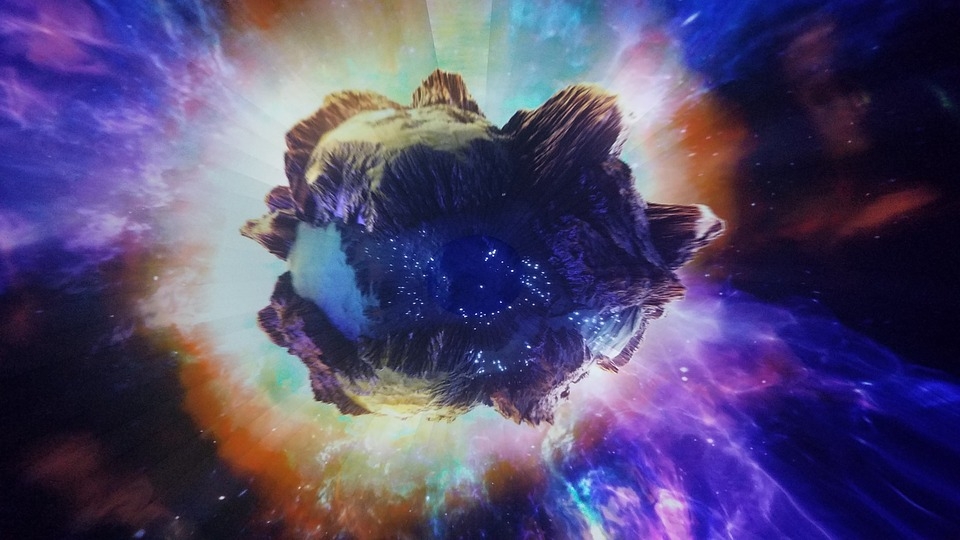Asteroids are always present in space either traveling across the cosmos or simply orbiting other celestial bodies. Recent research has revealed that these space rocks have so much more than the many compounds and elements that we have.
In 2018, scientists scrambled to obtain an asteroid that landed on a frozen lake in Michigan. With the use of NASA’s weather radar, they managed to find the crash site and collect the fallen space rock in pristine condition and astronomers have since analyzed its composition. They found that the meteor was abundant in alien compounds, perhaps unlike anything they had ever seen here on Earth, but it likely played a role in building life on our planet.
“This meteorite is special because it fell onto a frozen lake and was recovered quickly,” said Professor Philipp Heck of the University of Chicago who was also the lead author of the paper in a statement. “It was very pristine. We could see the minerals weren’t much altered and later found that it contained a rich inventory of extraterrestrial organic compounds. These kinds of organic compounds were likely delivered to the early Earth by meteorites and might have contributed to the ingredients of life.”
The asteroid was collected by meteor hunter Robert Ward and along with Terry Boudreaux, they donated the fragments to the Field Museum where Professor Heck and graduate student Jennika Greer studied the space rock. They determined that the asteroid is an H4 chondrite, a very rare type of meteor as only around four percent of asteroids that have collided with Earth are of this kind.
Speaking of Earthbound asteroids, a fireball was seen over the night skies of northwestern America and southwestern Canada the previous weekend on October 26. Those who were able to witness the spectacular phenomenon reported their sighting to the International Meteor Organization or IMO. Some witnesses described it as the biggest and brightest they had ever seen.
Photos and videos that were taken of the sighting show a bright streak of light on the left side of the night sky. Fireballs or shooting stars are a result of a very small asteroid hitting our atmosphere as it would be the first time the space rock has met resistance. The air seeps into every crack and crevice of the rock, pushing everything apart and making it explode.



 Archeoastronomy uses the rare times and places of previous total solar eclipses to help us measure history
Archeoastronomy uses the rare times and places of previous total solar eclipses to help us measure history  The mystery of consciousness shows there may be a limit to what science alone can achieve
The mystery of consciousness shows there may be a limit to what science alone can achieve  Six space missions to look forward to in 2024
Six space missions to look forward to in 2024  If life exists on Jupiter’s moon Europa, scientists might soon be able to detect it
If life exists on Jupiter’s moon Europa, scientists might soon be able to detect it  Alpha, beta, theta: what are brain states and brain waves? And can we control them?
Alpha, beta, theta: what are brain states and brain waves? And can we control them?  Orbital resonance − the striking gravitational dance done by planets with aligning orbits
Orbital resonance − the striking gravitational dance done by planets with aligning orbits  Synthetic human embryos let researchers study early development while sidestepping ethical and logistical hurdles
Synthetic human embryos let researchers study early development while sidestepping ethical and logistical hurdles  Why is the universe ripping itself apart? A new study of exploding stars shows dark energy may be more complicated than we thought
Why is the universe ripping itself apart? A new study of exploding stars shows dark energy may be more complicated than we thought  Why some people don't trust science – and how to change their minds
Why some people don't trust science – and how to change their minds  Could a telescope ever see the beginning of time? An astronomer explains
Could a telescope ever see the beginning of time? An astronomer explains  Black hole, neutron star or something new? We discovered an object that defies explanation
Black hole, neutron star or something new? We discovered an object that defies explanation  How do airplanes fly? An aerospace engineer explains the physics of flight
How do airplanes fly? An aerospace engineer explains the physics of flight  What is minoxidil, the anti-balding hair growth treatment? Here’s what the science says
What is minoxidil, the anti-balding hair growth treatment? Here’s what the science says  Tatahouine: 'Star Wars meteorite' sheds light on the early Solar System
Tatahouine: 'Star Wars meteorite' sheds light on the early Solar System  The brain is the most complicated object in the universe. This is the story of scientists’ quest to decode it – and read people’s minds
The brain is the most complicated object in the universe. This is the story of scientists’ quest to decode it – and read people’s minds 






























